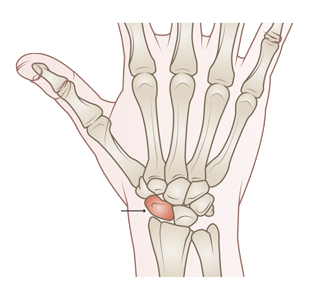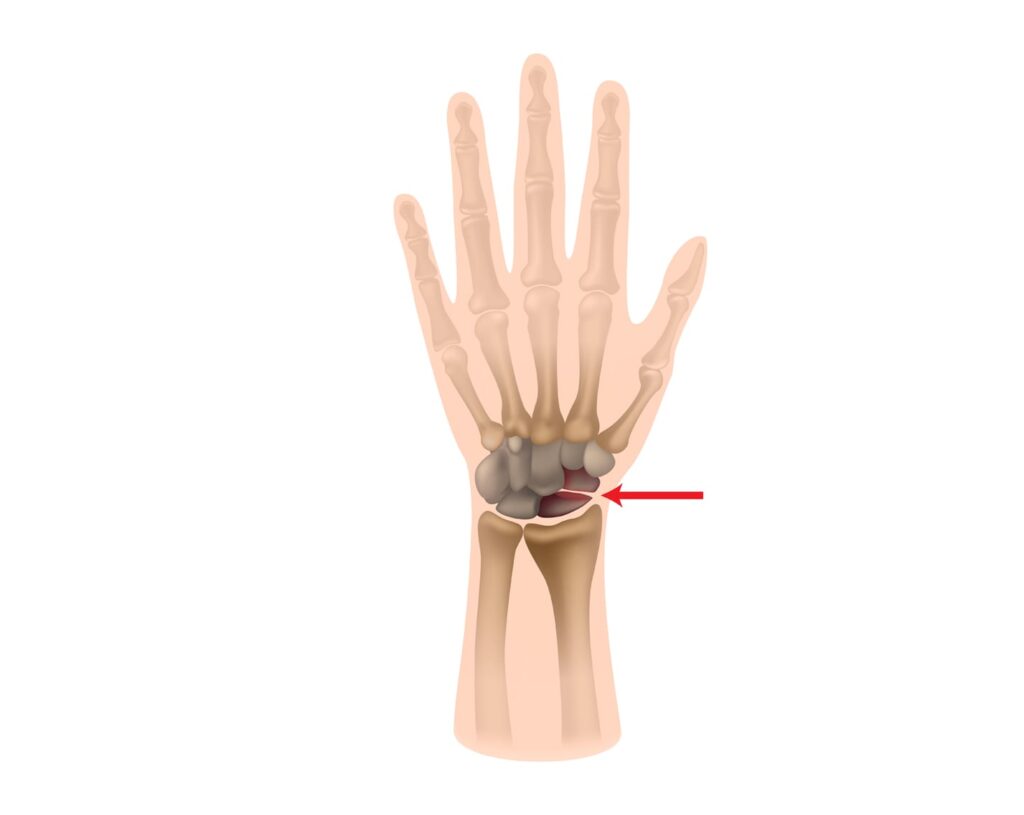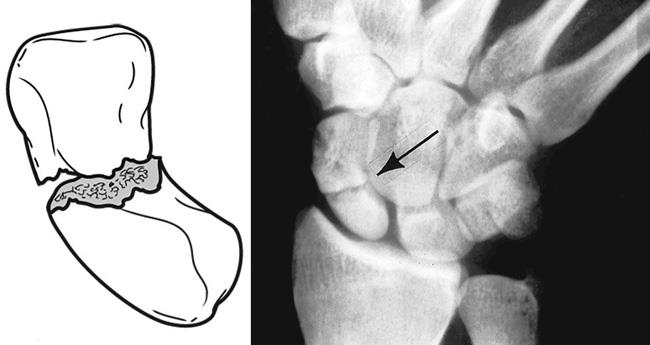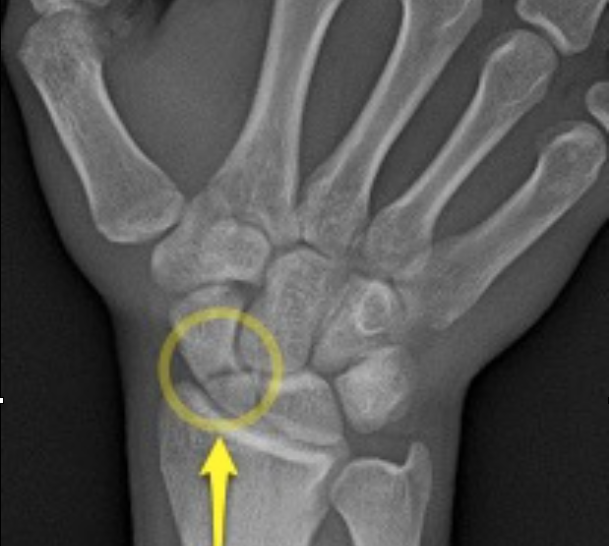Scaphoid Fracture

Scaphoid Fracture
In this blog post, we will take a closer look at the scaphoid fracture, including its causes, symptoms, and treatment options. We will also provide you with some tips on how to reduce your risk of developing this injury. Read on to learn more!

Scaphoid fracture: An Introduction
A scaphoid fracture can be a serious injury because it can damage the blood supply to the bone and cause problems with healing.
A scaphoid fracture is a break in the scaphoid bone, which is one of the small bones in your hand. The scaphoid bone helps to stabilize your thumb. A scaphoid fracture can occur if you fall on an outstretched hand or if you direct a blow to your thumb.
There are two types of scaphoid fractures:
- A stable fracture means that the bone is still in alignment and has not moved out of place.
- An unstable fracture means that the bone has shifted out of alignment and will require surgery to repair it.

Symptoms of Scaphoid Fracture
The most common symptom of a scaphoid fracture is pain in the wrist. This pain is typically worse when bending the wrist or using the hand for activities such as gripping. Other symptoms may include:
-Swelling and bruising around the wrist
-Difficulty moving the wrist or using the hand
-Tenderness to touch over the bone
-A visible deformity in the wrist (if the bone is out of alignment)
If you think you may have a scaphoid fracture, it is important to see a doctor as soon as possible. If the bone is not properly aligned and stabilized, it can lead to long-term problems with the wrist.
Diagnosis for Scaphoid Fracture
There are a few ways that your doctor can diagnose a scaphoid fracture. The first is through a physical examination. Your doctor will feel tenderness along the back of your hand and wrist and may ask you to move your hand in certain ways to see if there is any pain.
The second way to diagnose a scaphoid fracture is through an X-ray. This will show if there is a break in the bone. Sometimes, however, the break may not be visible on an X-ray right away. In this case, your doctor may order a computed tomography (CT) scan or magnetic resonance imaging (MRI).
The third way to diagnose a scaphoid fracture is through a bone scan. This is a test where a small amount of radioactive material is injected into your bloodstream and then images are taken to see if there are any areas of abnormal bone activity.

Treatment for Scaphoid Fracture
Once your doctor has diagnosed a scaphoid fracture, they will determine the best course of treatment. Treatment options include immobilization, surgery, or both.
Immobilization:
The most common treatment for a scaphoid fracture is immobilization. This means that you will need to wear a cast or splint for several weeks to allow the bone to heal properly. Your doctor may also recommend that you take pain medication and use ice to help with the pain and swelling.
Surgery:
The surgery for treating a scaphoid fracture involves the placement of screws and/or pins in the bone to hold it in place while it heals. In some cases, a bone graft or internal fixation may also be necessary. The surgery is performed under general anesthesia and takes approximately one hour. After the surgery, the patient will be placed in a splint or cast for six to eight weeks. Physical therapy may also be recommended to help regain range of motion and strength in the wrist.
After treatment, it is important to follow your doctor’s instructions for rehabilitation exercises and care of your cast or splint. With proper treatment, most people make a full recovery from a scaphoid fracture. However, there is a risk that the bone may not heal properly or that the injury may reoccur.
If you think you may have a scaphoid fracture, it is important to see orthopaedic surgeons so that the injury can be properly diagnosed and treated.

Complications associated with a scaphoid fracture
The most common complication associated with a scaphoid fracture is non-union, meaning that the bone fails to heal properly. This can lead to chronic pain and limited range of motion in the affected hand. Other complications include infection, arthritis, and nerve damage. In rare cases, a scaphoid fracture can cause the hand to become permanently deformed.
If you have suffered a scaphoid fracture, it is important to see an orthopedic surgeon for proper treatment. Untreated scaphoid fracture increases the risk of complications significantly.
Preventions Tips for Scaphoid Fracture
There are a few things you can do to help prevent a scaphoid fracture from happening in the first place. First, always wear protective gear when participating in activities that put you at risk for falls or other injuries to the hand. This includes wearing gloves when skiing or riding a motorcycle, and using appropriate safety equipment when playing contact sports.
Second, be aware of your surroundings and try to avoid situations where you could fall or injure your hand. If you are involved in an activity that carries a risk of falling, take extra care to protect your hands.
Third, if you have any pre-existing medical conditions that put you at higher risk for bone fractures, be sure to tell your doctor and follow their recommendations for preventing injuries. Conditions that can increase your risk for scaphoid fractures include osteoporosis, Ehlers-Danlos syndrome, and certain types of arthritis.
If you do suffer a scaphoid fracture, it is important to seek medical attention immediately. Early diagnosis and treatment can help ensure a full recovery.
It is also important to follow your doctor’s instructions for care and rehabilitation after a scaphoid fracture. With proper treatment, most people make a complete recovery and can return to their normal activities.

Long-term effects of a scaphoid fracture
The long-term effects of a scaphoid fracture may include:
-Arthritis of the wrist
-Joint stiffness
-Loss of range of motion in the affected wrist
-Chronic pain in the affected area
If you have suffered a scaphoid fracture, it is important to follow your doctor’s orders for treatment and rehabilitation. This will help minimize the risk of long-term effects.
Frequently Asked Questions about Scaphoid Fractures
Scaphoid fractures are breaks in the bone that connects the thumb to the wrist. The scaphoid is one of the small carpal bones in the hand, and it helps stabilize the thumb during movement. A fracture can occur when there is a fall onto an outstretched hand or direct trauma to the bone.
Symptoms of a scaphoid fracture may include pain and tenderness in the wrist, swelling, bruising, and difficulty moving the thumb or wrist. In some cases, there may also be a deformity at the site of the fracture.
A common carpal bone fracture is typically diagnosed with a physical examination and imaging tests, such as an X-ray or MRI.
Treatment for clinically suspected scaphoid fractures may include immobilization of the wrist in a cast or splint, followed by rehabilitation exercises. In some cases, surgery may be necessary to place screws or pins in the bone to help it heal properly.
Scaphoid fractures are breaks in the bone that connects the thumb to the wrist. The scaphoid is one of the small wrist bones and it helps stabilize the thumb during movement. A fracture can occur when there is a fall onto an outstretched hand or direct trauma to the bone.
3 Ways to Level Up Your Rehab and Injury Prevention With Us





